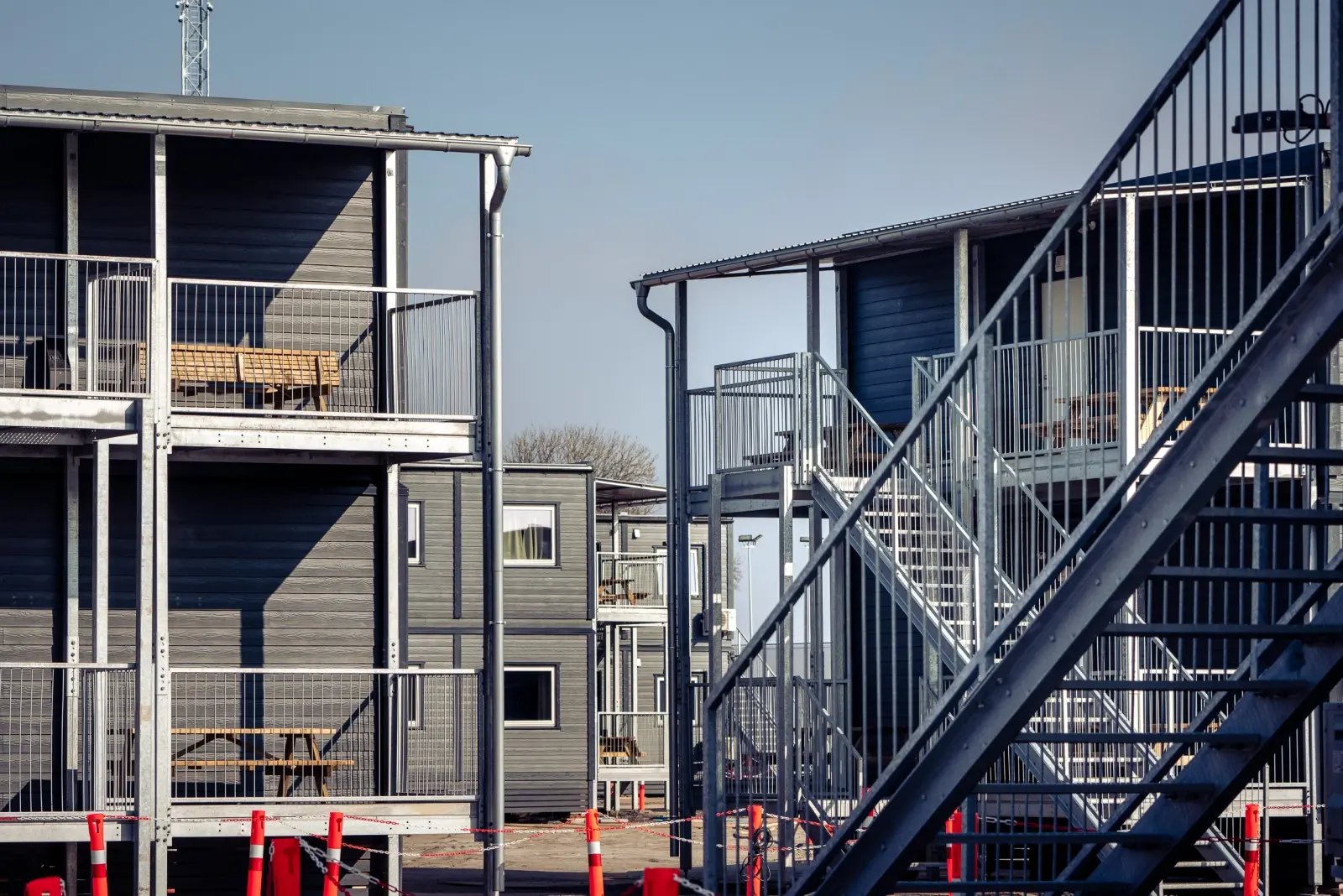- 1 min reading

Adapteo builds accommodation for construction workers at the Fehmarnbelt project.
How to house hundreds of construction workers at a project site? At the Fehmarnbelt tunnel project in Denmark, an adaptable village became the answer.
“Today, we‘ve got more than 300 workers, or villagers, living here“ -Jens Schmidt, Projectleader at Adapteo Denmark
The construction of the Fehmarnbelt tunnel, the longest railroad and highway tunnel under water, proceeds. The construction began about a year back, though the plans of building the tunnel started decades ago. But with a project of this volume, planning is key. For example – where are the construction workers going to live?
The task of housing all the workers on the construction site was assigned to Adapteo, and the adaptable FLC village of 30,000 square meters became the solution. The village will provide the workers with both accommodations and recreational spaces.
“So far, we’ve assembled over 500 building units. That is a total of 640 rooms and 16 buildings in total.” says Jens Schmidt, Project Manager at Adapteo.
The beginning of the project was demanding, according to Jens. The Adapteo team arrived to bare grounds and the first buildings were put together during the process of preparing electricity and water for the village site. The process has since then developed substantially.
“In the beginning, it took us several months to complete a few buildings. Today, we‘re assembling four buildings in six weeks. Still, we are creating a good momentum, and we might be able to save another week from now on“ -Jens Scmidt, Projektleder, Adapteo.
When the buildings arrive at the construction site, they are about 90 per cent finished, equipped with furniture, linen, and bathroom. The on-site team then puts the building units together before they do the finishing touch.
“Thanks to the great cooperation with FLC, the support from our Swedish colleagues, our Site Manager; Ole Christensen, and all of our sub-contractors, the project runs according to plan. But we still have a lot of buildings left to install, and our goal is to finish in 2023”, says Jens.
The FLC village will then provide the workers with housing until the end of the Fehmarnbelt-project, which is estimated to finish in the year 2029.